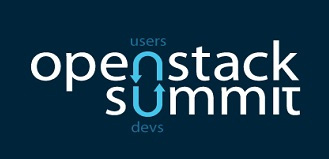One of the more interesting trends in cloud computing is the emergence of OpenStack, a set of open-source projects to set up public and private cloud computing solutions. This was originally set up by Rackspace Hosting and NASA, but now has grown into a full platform run by the OpenStack Foundation and held its own summit this week.

Troy Toman, senior director for cloud compute engineering at Rackspace and a director of the OpenStack Foundation, said the major projects within OpenStack include Nova, an open-source cloud computing fabric; Glance, for managing server (virtual machine) images; and Quantum, for providing “network as a service” functions. The last one is an API for dynamically configuring virtual networks, effectively a method of software-defined networking (SDN), and is a big part of the latest release of OpenStack, known as “Folsom.” (Companies such as Nicira, which is now becoming part of VMware, have been driving this.)
Steve Hallett, head of infrastructure engineering and cloud operations at X.commerce, part of eBay, said his firm is using OpenStack to build a platform where developers and merchants can integrate their offerings with eBay’s services. The company decided to use OpenStack about a year and a half ago and launched the production version of the platform on the “Diablo” version of OpenStack in April. Two months ago, the company moved to the “Essex” version and in a few weeks plans an upgrade to “Folsom.” The new version includes more options for high-availability storage, as well as automating networking on the software level.
Interestingly, X.commerce uses OpenStack as the “infrastructure as a service” (IaaS) layer, then uses VMware’s Cloud Foundry as its “platform as a service (PaaS) layer. Hallett says the combination gives the organization the automation and scaling it wants. The company is working with Rackspace on a proof-of-concept implementation of a Hybrid OpenStack cloud, so it can move resources to the public cloud when it wants to. In terms of computing power, he said he wants to “own the base and rent the spikes.” This proof-of-concept should be done within the next few weeks, and he hopes to have a basic hybrid cloud running in about three months. Farther down the road, he wants to be able to scale to the hybrid cloud automatically, and that may take six months.
A number of firms made announcements at the summit that, taken together, show important improvements in the platform.
A couple of months ago, Rackspace announced its own private cloud software, known as “Alamo,” designed for businesses that want to set up their own private clouds based on the OpenStack projects. The company says that 25 percent of the Fortune 100, as well as nearly 100 colleges and similar institutions, have now downloaded the software. Toman said the focus will now be extended to linking together public and private cloud deployments. “It’s not an either/or choice for most customers,” he said. “They want to do both [public and private cloud].”
In addition, Rackspace announced certification for products for private clouds and software development kits for PHP and Java, which builds upon the OpenStack organization’s APIs. (Most of OpenStack was written in Python, and there are already libraries for that.)
Meanwhile, Cisco announced its own Cisco Edition of OpenStack, which is designed to make it easier to deploy OpenStack on the company’s hardware. (You don’t have to run this edition on Cisco hardware, but it is only validated on the firm’s Nexus switches and UCS servers.)
OpenStack has its own Quantum networking-as-a-service project, which involved contributions from Cisco as well as software-defined network (SDN) providers such as Nicira and while many participants seemed to be using Nicira’s offerings even before the “Folsom” release.
There are a number of companies with OpenStack-based public networks, including Rackspace, Internap, HP, and DreamHost with private cloud tools available from companies such as Cloudscaling and MetaCloud.
Other companies made announcements as well. NetApp will offer new storage drivers for OpenStack and Mellanox will offer the next generation of its SwitchX-2 SDN switch technology.
OpenStack is one of three big “open cloud” groups that seem to be coalescing, with the others including Cloudstack and Eucalyptus, which has a partnership with Amazon Web Services.
I don’t know which platform is right for which customers, but I do know that we will need some maturing sets of standards for enterprises to adapt private and hybrid clouds widely. This week’s OpenStack Summit is a good indication that there’s real progress happening in this area.












